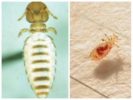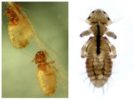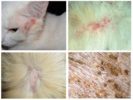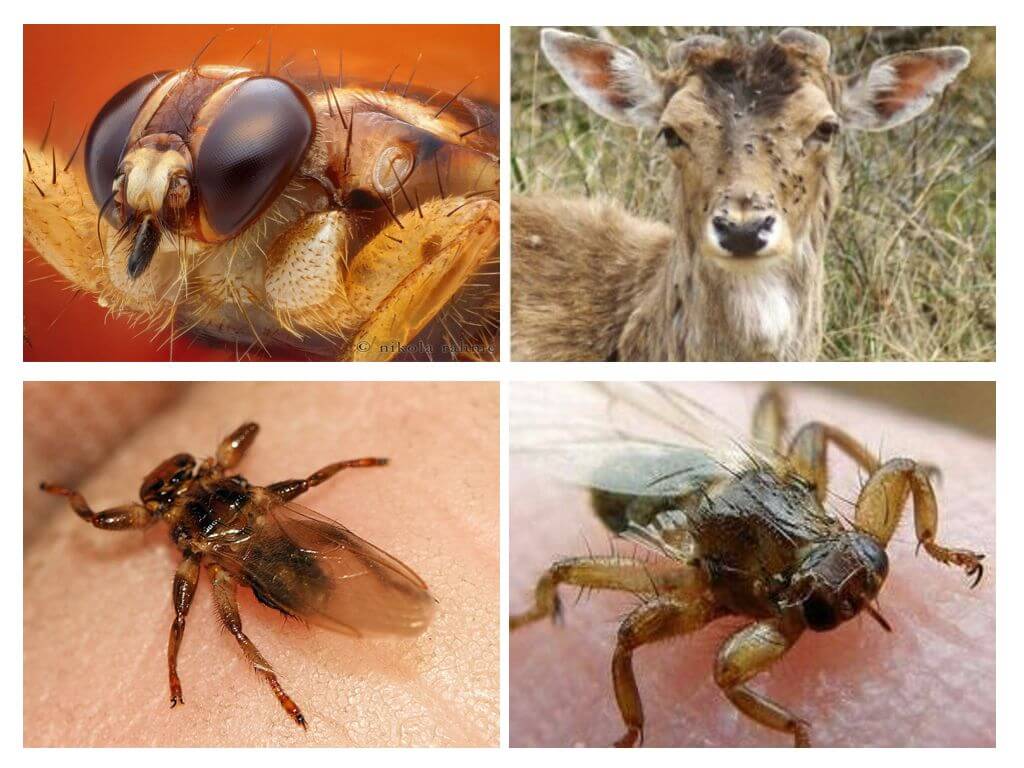- Lice eaters
- Lice eaters
- Lice-eaters in cats
- Spray Front Line
- Drops Bars
Lice in cats is a fairly common occurrence. Small parasites can not always be noticed even by attentive hosts. And many simply don’t know whether cats have lice. Most often, these small creatures in a pet start at the moment when it’s already parasitizing fleasserving camouflage lice. Therefore, many people consider the constant itching, scratching and irritation on cat's skin to be the cause of fleas. The presence of lice in a cat can lead not only to the development of dermatitis and baldness, but also to helminthiasis and general depletion of the body. Therefore, every caring owner should recognize the "enemy" of his pet and take timely action.
What does a cat louse look like?
A careful examination of the animal’s hair reveals strange insects that look very much like fleas or head lice. The question, how to understand that a cat has fleas or lice, is puzzled by many. You can distinguish these insects in appearance: fleas are almost black in color, lice are light yellow in color. In addition, fleas are much more mobile and can jump.

Cat lice, or as lice eaters, are parasites that feed on exfoliating particles of the skin and hair of the animal. A louse-bearer is not able, like a head louse, to drink cat's blood. This is only possible in rare cases when the parasite accidentally fell on a wound or scratch. But gnawing pieces of skin on a cat causes her severe itching.
Cat louse is a small insect whose flat body is no more than 2 mm in length. On the head, which has a characteristic triangular shape, there are powerful jaws. Thanks to them, parasites gnaw off pieces of the epithelium and eat it. A photo of cat lice is presented below.
Lice in cats have an incomplete transformation cycle; they have no pupal stage. The life cycle of parasites is a little less than a month. One female in her life is capable of laying from 50 to 70 eggs, which are covered with an adhesive substance during passage through her inner cavity. When leaving the body of the female, they are well attached to the cat's hair.
It is nits in cats that are one of the main symptoms of the presence of parasites. In a few days, larvae will appear from them, which only smaller sizes will distinguish from adult individuals. They will become sexually mature after the occurrence of three links. The photo shows how the nits look.
On a note!
Lice breed very quickly. Especially a lot of insects appear in the autumn-winter period, when the animal has a thicker undercoat. In spring and summer, during seasonal molting of animals, insect populations decrease. The coarsening of the skin of the pet also contributes to this.
Signs of infection

A pet can become infected with parasites:
- during contact with an infected animal;
- when using other people's untreated tools intended for grooming;
- beetles can be transmitted to the kitten from the mother.
You can understand that cats have lice by the following criteria:
- itching - the animal often itches, becomes restless and nervous;
- the appearance of wounds and scratches caused by severe scratching;
- active hair loss, even baldness is not ruled out;
- roughening of the skin and dermatosis;
- the presence of nits and excrement, resembling black pepper in appearance.
Below is a photo of cats lice.

If you do not take timely measures to destroy cat lice, the animal will become ill: cestodoses (tapeworms), cucumber tapeworm or leptospirosis may develop. Large populations of lice cause allergies and anemia.
Can cat lice live on humans
The question of whether lice are transmitted from a cat to a person, or vice versa, whether lice can pass from a person to a cat, arises among many owners of furry creatures. Each type of louse lives on a specific object: head lice live in a person’s hair, pubic lice prefer to settle in the groin, and cat lice only on cats. Therefore, it is simply impossible to catch lice from a cat. This also applies to the cat itself - she also can not get lice from a person, just as cattle lice do not pose a danger to her.
Any cat can infect pests, with the exception of representatives of hairless breeds. But the risk of contracting pediculosis in pets with thick and long hair is especially high.
Means of struggle
Cat lice control measures are similar to those taken to destroy fleas. Flea Antiparasitic Drugs can be in the form of shampoos, sprays or a drop. Collars are also used for this purpose.
Important!
In order to avoid harm to the health of the pet when choosing a product, you need to pay attention to its composition.
Shampoos
Insecticidal shampoos for cats - This is the most suitable option for getting rid of pests for pregnant and lactating animals, as well as for small pets. The soap base is detrimental to insects, as it impedes their movement. As a result, parasites are easily removed from the coat. But against nits that hold tight enough on the hairline, an insecticidal shampoo must be used several times. This will help prevent the spread of newly emerged larvae.
Shampoos of the following brands are in great demand among owners of four-legged friends: Rolf Club, Fitoelita or Lugovoi. They are treated according to the instructions, and after an incident of 1.5-2 weeks it is repeated.
Feedback
For removing lice and fleas kitten I use Lugovoi shampoo. Several of these treatments and the parasites are over. I recommend a good tool!
Julia, Moscow
Sprays
In case of excessive infection with feline parasites, sprays are used, which also include insecticidal components. Cat's hair is sprayed with the product and is not washed off during the time specified in the description.

Treatment with such agents requires compliance with the manufacturer's recommendations, as they can cause side effects in the form of excessive salivation, vomiting, and even inhibition of the pet. The most popular sprays today are Frontline, Blohnet or Hartz.
Drops
Lice in animals are also destroyed with the help of drops. This is perhaps the most universal means of combating blood-sucking parasites, as well as whipworms. The insecticidal substance is applied to places where the cat cannot lick it (at the withers or along the spine).
When applied to a pet’s hair, the active component accumulates in its upper fat layer of the skin. During a bite, the poison enters the digestive tract of the parasite, causing its death. Also drops for cats possess a prolonged action, which will not allow parasites to settle in cat hair for several months. Drops on the withers of Hartz, Bars, Front Line or Bayer give a good result against the lathers.
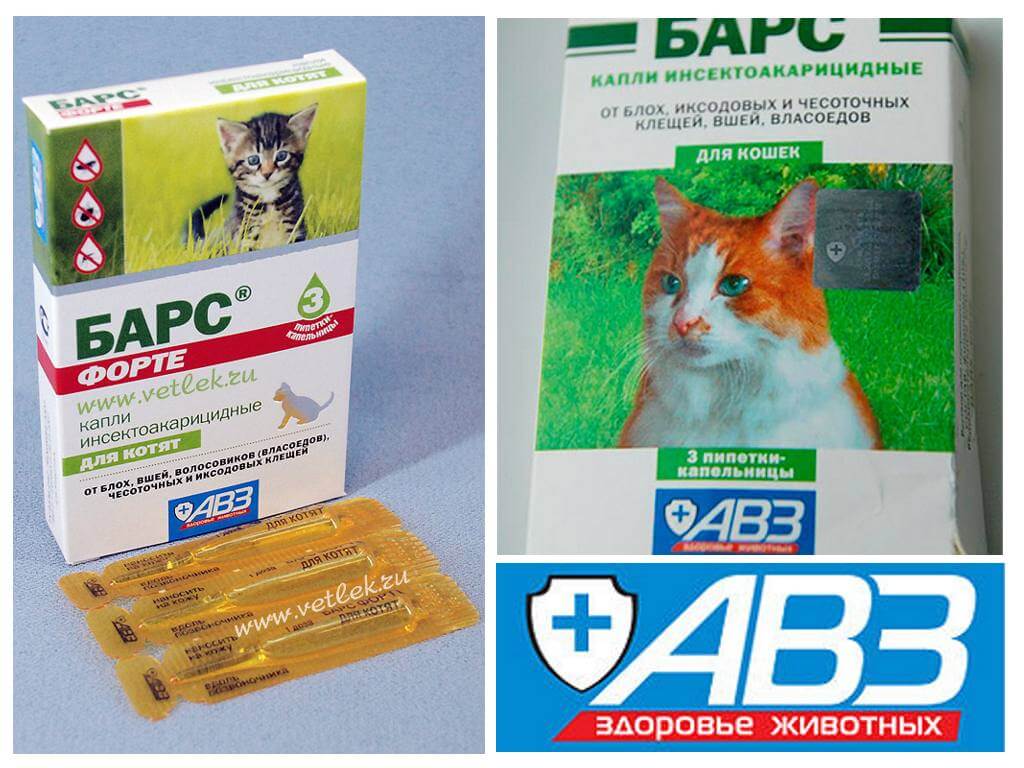
Feedback
When my cat began to have a lot of hair, I took her to the vet. It was he who discovered lice in my pet. I recommended drops Bars. At home she put them on the withers of the cat and along the spine. Check for lice every week.Only one treatment was enough to completely get rid of parasites.
Elena, Karaganda
Collars
Collar for cats - Another method of combating parasites. They protect against fleas, ticks, and also lice eaters, preventing them from moving from one animal to another. However, not all cats give their consent to wearing such accessories. The use of a collar should not cause discomfort or irritation to the skin. Therefore, it is very important to choose the right size. Many cat owners prefer the collars of the company Bars, Hartz, Kiltix.
Determining whether lice live on cats is a snap. It is important to notice this in time and choose an effective means of struggle. But it is preferable in this case to consult with the veterinarian. This is especially true for cats of decorative breeds.
